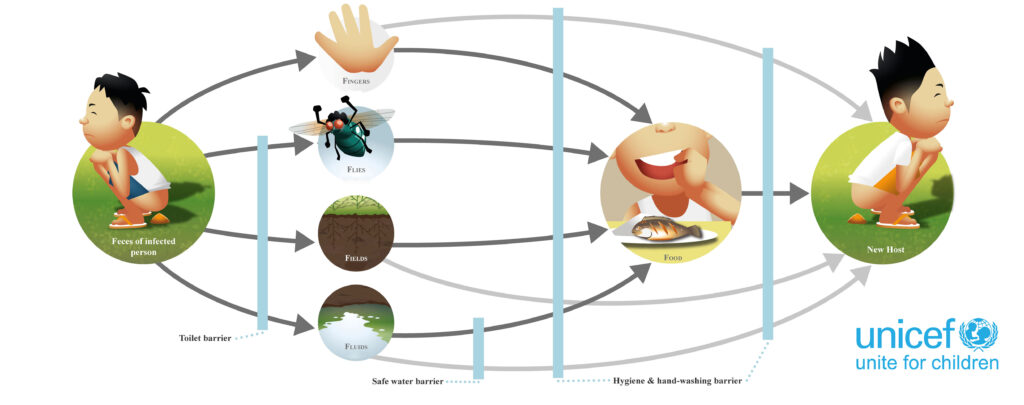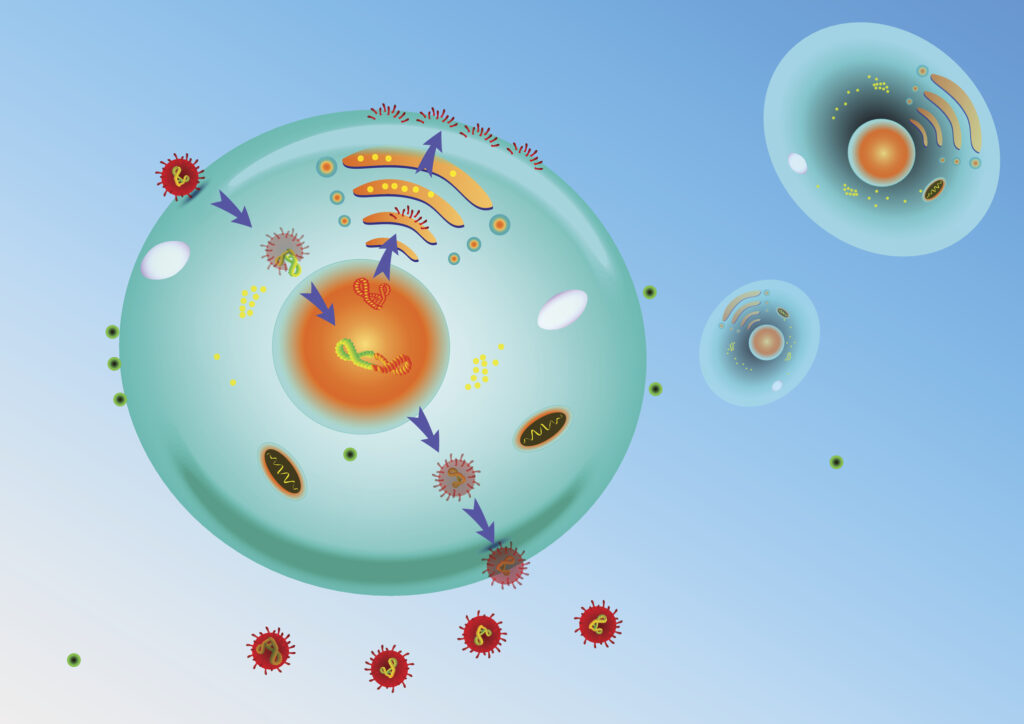Understanding how a virus replicates inside the body is crucial for working out how it spreads, and how to stop it. A research team at the University of North Carolina School of Medicine has been looking at this process for the hepatitis A virus (HAV).
Hepatitis A is a short-term liver disease caused by the hepatitis A virus. Worldwide, an estimated 1.4 million cases of hepatitis A occur each year. There were 145 notified cases in Australia in 2016. Hepatitis A infection does not cause chronic liver disease, but the symptoms can be debilitating. It is rarely fatal, but can sometimes lead to fulminant hepatitis (acute liver failure), which can lead to death. It is contracted through the faecal-oral route, ie usually by consuming food or water that has been contaminated with infected sewage.

No Current Treatment
Though there is a vaccine for hepatitis A, there is no current treatment for it if a person becomes infected. It is here that an understanding of how the virus reproduces would be extremely useful.
By focusing on the replication cycle of the hepatitis A virus — how the individual viruses invade human body cells and hijack their machinery to create more of themselves — the UNC team, led by Dr Stanley Lemon, discovered that replication requires specific interactions between a human protein (known as ZCCHC14) and a group of little-understood enzymes called the TENT4 poly(A) polymerases. The research also found that a particular medication known as oral compound RG7834, which is known to inhibit the hepatitis B virus, stopped hepatitis A replication at a key stage, making it impossible for the virus to infect liver cells.

These findings, published in the Proceedings of the National Academy of Sciences, are the first to demonstrate an effective drug treatment against hepatitis A .
Dr Lemon explained that “our research demonstrates that targeting this protein complex with an orally delivered, small-molecule therapeutic halts viral replication and reverses liver inflammation of hepatitis A [in mice], providing proof-of-principle for antiviral therapy and the means to stop the spread of hepatitis A in outbreak settings.”
Outbreaks on the Rise
Dr Lemon, who in the 1970s and 80s was part of the research team that developed the first vaccine made of inactive hepatitis A to be administered to humans, said that the amount of research on HAV had dramatically decreased after the vaccine became widely available in the mid-1990s. Cases of HAV plummeted in the 2000s as vaccination rates skyrocketed, especially in countries like Australia with strong public health systems. Researchers turned their attention to hepatitis B and C viruses, both of which are very different from HAV and cause chronic disease. “It’s like comparing apples to turnips,” Lemon said. “The only similarity is that they all cause inflammation of the liver.” HAV is not even part of the same virus family as hepatitis B and C viruses.
…discoveries about the way that the hepatitis A virus changes dramatically inside the human liver.
But hepatitis A outbreaks have been on the rise since 2016, despite the effectiveness of the HAV vaccine. For example, in the US there have been 44,000 cases, 27,000 hospitalisations and over 420 deaths in the last five years.
In 2013, Lemon and his colleagues made several discoveries about the way that the hepatitis A virus changes dramatically inside the human liver. The virus hijacks bits of cell membrane as it leaves liver cells, cloaking itself from antibodies that would have otherwise quarantined the virus before it spread widely through the blood stream. This work was published in Nature.
That work led into the new research, Lemon said. “We found [the human body protein] ZCCHC14 binds very specifically to a certain part of the hepatitis A virus’s RNA, the molecule that contains the virus’s genetic information. And as a result of that binding, the virus is able to recruit [the human cellular enzyme] TENT4.”
In normal human biology, TENT4 is involved in modifying the body’s RNA during the usual process of cell growth. In someone infected with hepatitis A, the virus basically hijacks the TENT4 enzyme to build more of itself instead. This means that stopping the virus from accessing TENT4 could stop the virus from replicating and spreading.

Lemon’s lab then tested whether the compound RG7834 could work to block this process, since it has already been shown to block hepatitis B from replicating in a similar way, and indeed were able to show that it does.
However, this is not the final hurdle to be cleared. Though the amounts of RG7834 used in the study were shown to be safe, it is not known if it non-toxic enough to be used for the longer time-frames required for treatment in the general public.
“This compound is a long way from human use,” Lemon said, “But it points the path to an effective way to treat a disease for which we have no treatment at all. The treatment for hepatitis A would be short-term, and, more importantly, our group and others are working on compounds that would hit the same target without toxic effects.”
